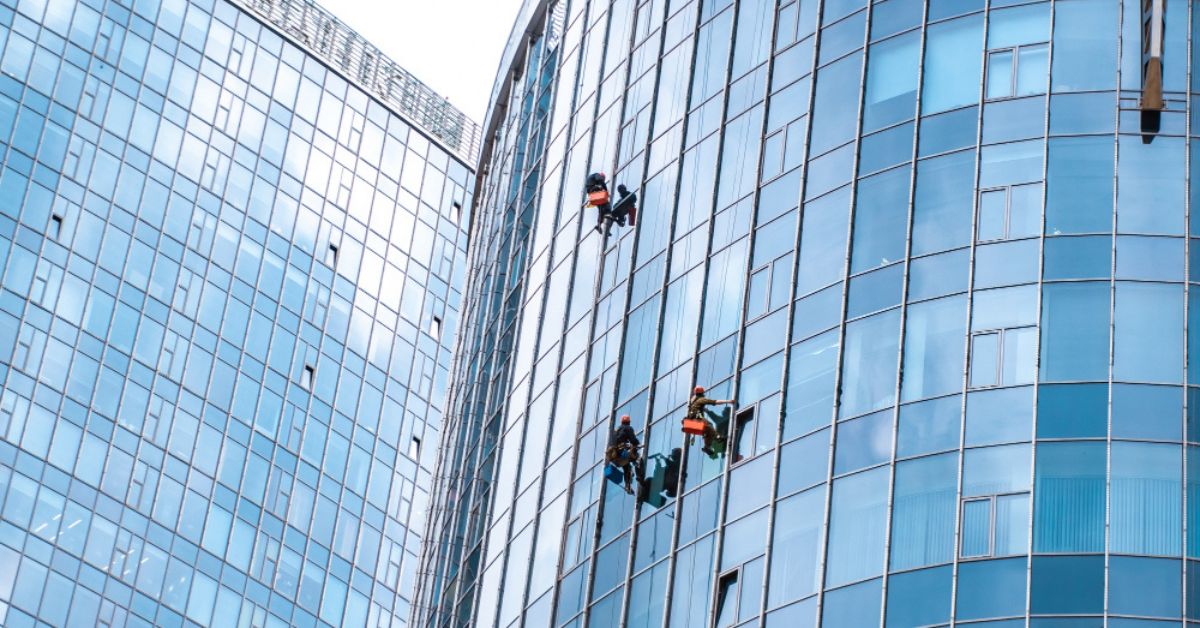General
Trockeneisstrahlen Fassade: The Innovative Cleaning Solution for Modern Building Care

Introduction to Trockeneisstrahlen Fassade
In the field of building maintenance and restoration, Trockeneisstrahlen Fassade has emerged as a revolutionary cleaning method. This technique, known in English as dry ice blasting for facades, uses compressed air to propel small pellets of solid carbon dioxide (CO₂) onto surfaces. When these pellets hit the surface, they sublimate—meaning they change directly from solid to gas—leaving no liquid residue. The method offers a non-abrasive, eco-friendly, and highly effective way to clean a wide range of materials found on building facades, from brick and concrete to stone and metal.
The popularity of Trockeneisstrahlen Fassade has grown rapidly in Europe, especially in Germany, where environmental consciousness and preservation of architectural heritage are high priorities. This cleaning technique is widely used in both modern and historical building projects due to its ability to clean without damaging the surface underneath.
Understanding the Process of Trockeneisstrahlen
The principle behind Trockeneisstrahlen Fassade is simple yet highly technical. Dry ice pellets, made from compressed CO₂, are accelerated through a specialized nozzle using compressed air. Upon impact with the facade surface, the pellets cause a rapid cooling effect and micro-explosions that lift off dirt, paint, mold, or other contaminants.
Because dry ice sublimates immediately, no secondary waste such as water, sand, or chemicals is left behind. This not only makes the process cleaner but also significantly reduces post-cleaning disposal costs. In addition, Trockeneisstrahlen Fassade is safe for use around electrical components and in environments where water-based cleaning would be unsuitable.
Why Trockeneisstrahlen Fassade Is Superior to Traditional Methods
Traditional facade cleaning methods often involve high-pressure water, sandblasting, or chemical cleaning agents. While these methods can be effective, they also come with several drawbacks. High-pressure water can damage delicate materials and may lead to moisture infiltration within walls. Sandblasting, though powerful, can erode the surface and remove not only dirt but also the original finish of the material. Chemical cleaning methods, on the other hand, can be harmful to both the environment and human health.
In contrast, Trockeneisstrahlen Fassade provides a gentle, environmentally safe, and residue-free alternative. Because dry ice pellets evaporate instantly, they do not introduce moisture or leave chemical residues. This makes the process ideal for sensitive or historical surfaces that must be preserved with precision.
Environmental Benefits of Trockeneisstrahlen Fassade
One of the strongest arguments for using Trockeneisstrahlen Fassade is its environmental friendliness. The CO₂ used to make dry ice is typically a byproduct from other industrial processes, meaning no additional emissions are produced for this cleaning method. During the process, the dry ice sublimates and returns to the atmosphere as a gas, contributing no extra CO₂ beyond what already exists.
Furthermore, since the method does not require harmful solvents or cleaning chemicals, it minimizes pollution and health risks for workers and nearby residents. The lack of wastewater also means there is no contamination of soil or water systems. These eco-friendly properties make Trockeneisstrahlen Fassade an ideal choice for sustainable construction and renovation projects.
Applications of Trockeneisstrahlen Fassade
The versatility of Trockeneisstrahlen Fassade allows it to be applied in a wide variety of settings. In modern architecture, it can be used to clean glass facades, aluminum panels, and painted concrete surfaces. It removes grime, soot, graffiti, and oxidation layers without scratching or corroding the surface.
In historical preservation, Trockeneisstrahlen Fassade is particularly valuable. Old buildings often contain delicate materials such as sandstone, limestone, or terracotta, which can easily be damaged by abrasive methods. Dry ice cleaning allows restorers to remove decades of dirt, mold, and pollution residue without affecting the original texture or structure of the stone.
The method is also used in industrial settings, where it helps maintain factory exteriors, storage tanks, and equipment housings. Because dry ice blasting is non-conductive and water-free, it can safely be used around electrical installations and sensitive machinery.
The Science Behind Trockeneisstrahlen Fassade
The effectiveness of Trockeneisstrahlen Fassade is due to a combination of thermal shock, kinetic energy, and sublimation. When the dry ice pellets contact the surface, they cool the dirt or coating rapidly, causing it to contract and lose adhesion. The kinetic energy from the pellets then loosens and lifts the contaminants from the surface. Finally, the dry ice immediately sublimates, expanding in volume and carrying away the dislodged particles.
This three-fold mechanism ensures thorough cleaning without abrasion. The surface remains intact, smooth, and free from residues. The process is gentle enough for fragile materials yet powerful enough to remove even stubborn coatings, tar, or graffiti.
Cost Considerations and Efficiency
While Trockeneisstrahlen Fassade may seem more expensive upfront than some traditional methods, it often proves to be more cost-effective in the long run. The absence of secondary waste significantly reduces cleanup time and disposal costs. Moreover, the reduced risk of surface damage means fewer repairs or restorations are needed after cleaning.
Additionally, the process is quick and efficient. A professional team can clean large facade areas in less time compared to water or sand-based methods. Because there is no drying time, the cleaned surfaces are immediately ready for further treatment, painting, or inspection.
Safety Aspects of Trockeneisstrahlen Fassade
Safety is another important advantage of Trockeneisstrahlen Fassade. Since the process involves no chemicals or water, workers are exposed to fewer hazards. However, proper protective equipment—such as goggles, gloves, and ear protection—is still necessary due to the high-speed nature of the pellets and the loud noise generated by the machinery.
Additionally, the CO₂ gas produced during sublimation can displace oxygen in confined spaces, so good ventilation is essential. Professional service providers are trained to ensure safe working conditions and comply with all safety regulations when using Trockeneisstrahlen Fassade.
Case Studies: Successful Use of Trockeneisstrahlen Fassade
In many European cities, Trockeneisstrahlen Fassade has already been used successfully for major restoration projects. For example, historical city centers with buildings covered in soot and pollution have seen remarkable transformations after dry ice cleaning. The method allows for precise removal of dirt layers while keeping the building’s original character intact.
In modern office buildings and public structures, Trockeneisstrahlen Fassade has proven effective in removing graffiti and pollutants without damaging protective coatings or surface finishes. Industrial complexes have also adopted the method for regular maintenance, as it minimizes downtime and avoids water-related corrosion.
Comparing Trockeneisstrahlen Fassade to Other Modern Methods
While laser cleaning and ultrasonic cleaning are other innovative technologies gaining attention, Trockeneisstrahlen Fassade remains one of the most practical and cost-effective solutions for large surfaces. Laser cleaning, though precise, is often too slow and expensive for extensive facades. Ultrasonic cleaning requires immersion in water, which makes it impractical for fixed architectural structures.
Trockeneisstrahlen Fassade stands out for combining efficiency, safety, and environmental compatibility, making it ideal for both modern and historical buildings.
Maintenance After Trockeneisstrahlen Fassade
Once a facade has been cleaned using Trockeneisstrahlen Fassade, maintaining its appearance becomes easier. The process not only removes visible dirt but also clears microscopic pores, preventing the buildup of mold and pollutants. Applying a suitable protective coating after cleaning can help extend the period between cleanings, keeping the surface in excellent condition for years.
Property owners are encouraged to schedule periodic inspections and light maintenance cleanings to prevent dirt accumulation. Because Trockeneisstrahlen Fassade does not erode the surface, it can safely be repeated as often as necessary.
The Future of Trockeneisstrahlen Fassade Technology
As technology evolves, Trockeneisstrahlen Fassade is expected to become even more efficient. Modern equipment now features adjustable pressure settings and specialized nozzles that allow precise cleaning of complex architectural details. Innovations in dry ice pellet production have improved performance and consistency, making the method faster and more effective.
With sustainability becoming a global priority, demand for Trockeneisstrahlen Fassade will likely increase. Architects, conservators, and property managers are increasingly adopting this technique as part of their green building maintenance strategies.
Conclusion
Trockeneisstrahlen Fassade represents a perfect balance between technology, sustainability, and preservation. Its ability to clean without damaging or polluting makes it one of the most advanced facade cleaning solutions available today. Whether used for restoring historic buildings, maintaining modern structures, or cleaning industrial facilities, this method offers unmatched results with minimal environmental impact.
By combining science and sustainability, Trockeneisstrahlen Fassade sets a new standard for how we care for the surfaces that define our built environment. It is not just a cleaning technique—it is a step toward a cleaner, greener, and more responsible future in building maintenance.
Would you like me to make this article sound more formal (for a technical journal) or more promotional (for a company website)?






